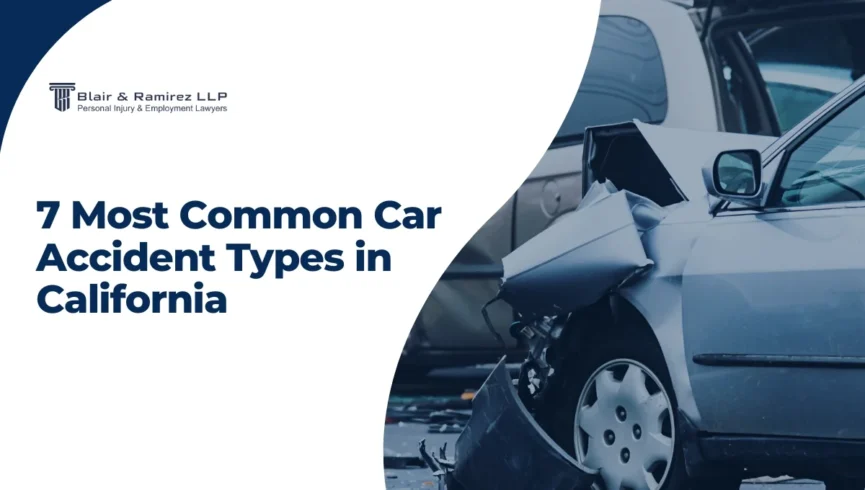Car accidents in California happen fast, leaving you injured, overwhelmed, and unsure where to turn. From rear-end crashes on I-405 to dangerous T-bone collisions at intersections, most collisions result in injuries, medical bills, and complex insurance issues.
At Blair & Ramirez LLP, we help victims of all types of car accidents recover what they are owed clearly, quickly, and with no upfront fees. You focus on healing. We handle the legal fight.
7 Most Common Car Accident Types in California
Knowing the type of car crash you were involved in is crucial for proving fault and securing compensation. Each of these 7 accident types affects liability, injury severity, and how your case is handled.
1. Rear-End Collisions: The Most Common Urban Traffic Accident
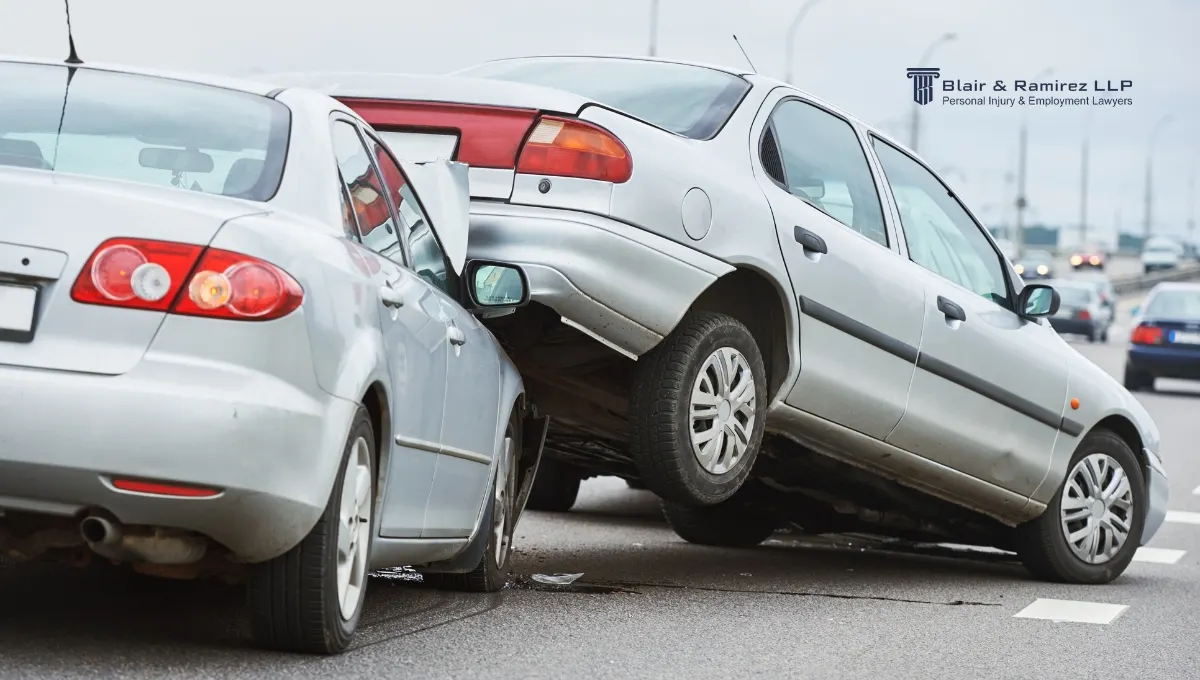
2. T-Bone or Side-Impact Collisions: High-Risk Crashes at Intersections
3. Head-On Collisions: High-Impact Crashes with Catastrophic Consequences
4. Sideswipe Collisions: Often Caused by Unsafe Lane Changes
Sideswipe accidents occur when two vehicles traveling in the same direction make lateral contact, typically as a result of an unsafe lane change, failure to check blind spots, or sudden, improper merging. These collisions often happen at high speeds on highways or during congested traffic, and while they may appear minor, they can lead to serious injuries and secondary crashes. Establishing liability can be complex when both vehicles are in motion, requiring evidence such as dashcam footage, eyewitness testimony, and expert analysis. Under California Vehicle Code § 22107, drivers must signal and ensure it is safe before changing lanes, failure to do so may constitute negligence. Even in cases where injuries appear moderate, victims may still be entitled to compensation for medical costs, lost wages, and pain and suffering.
5. Multi-Vehicle Pileups: Chain-Reaction Collisions on California Freeways
Multi-vehicle accidents, commonly referred to as pileups, frequently occur on California’s high-speed freeways, particularly during low-visibility conditions caused by fog, heavy rain, or wildfire smoke. These complex collisions typically involve a chain reaction, where an initial impact triggers a series of subsequent crashes within seconds. Establishing liability in multi-vehicle incidents is legally intricate and may involve comparative fault analysis, vehicle positioning, speed assessments, and forensic accident reconstruction. Insurance carriers often dispute or shift liability to minimize exposure, making experienced legal representation critical. Victims are frequently subjected to multiple impacts, delayed-onset injuries, and prolonged claims processes. Pursuing just compensation requires a strategic legal approach backed by thorough investigation and expert evidence.
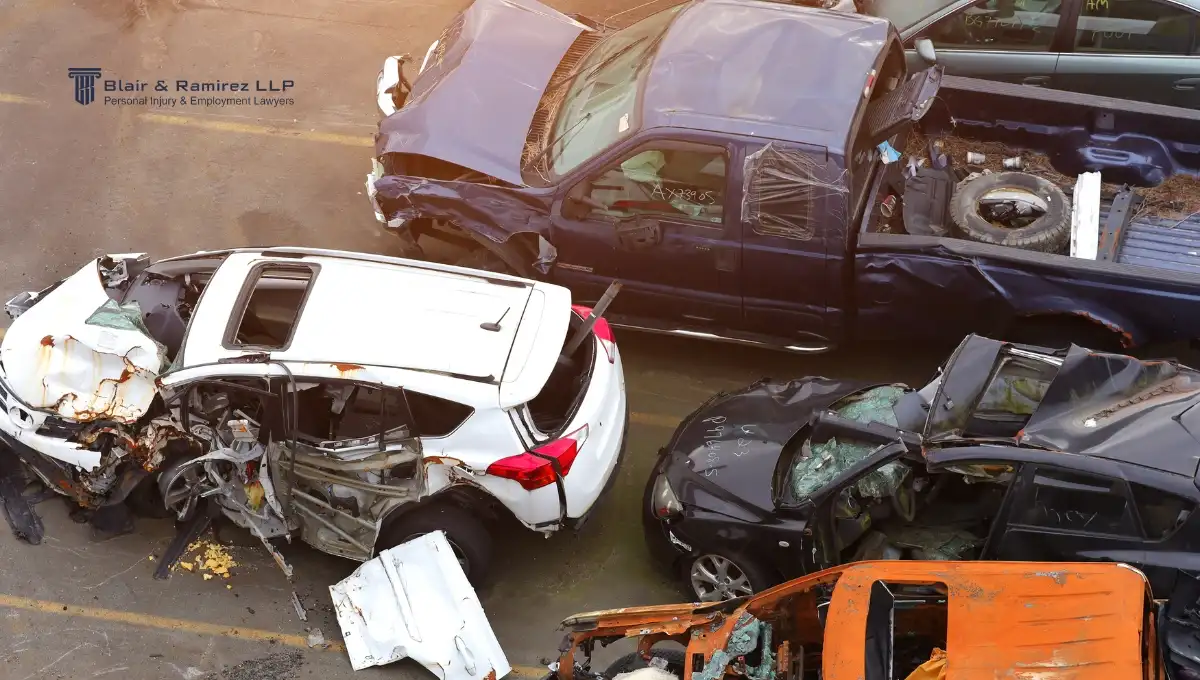
6. Single-Vehicle Accidents: Liability Beyond the Driver
Single-vehicle crashes, though involving only one vehicle, can still result in serious injuries, fatalities, or substantial property damage. These accidents are often caused by external factors such as hazardous road conditions, missing or obscured traffic signage, or mechanical failures like brake defects or tire blowouts. While drivers are commonly presumed at fault, liability may instead rest with a government entity responsible for roadway maintenance or a manufacturer under product liability law. Successfully pursuing compensation in these cases requires compelling evidence, such as expert inspections, maintenance records, or design defect analysis to prove that the incident stemmed from a third party’s negligence or defective product, rather than driver error.
7. Hit-and-Run Accidents: Legal Recourse When the At-Fault Driver Flees
What Causes Car Accident in California?
Most car accidents in California result from preventable acts of negligence. Determining the root cause of your collision is essential to proving liability, preserving critical evidence, and presenting a strong personal injury claim. A comprehensive legal investigation can reveal contributing factors, strengthening your case and protecting your right to maximum compensation.
Distracted Driving and Mobile Device Use: A Leading Cause of Preventable Collisions
Driving Under the Influence (DUI): A Major Factor in High-Severity Collisions
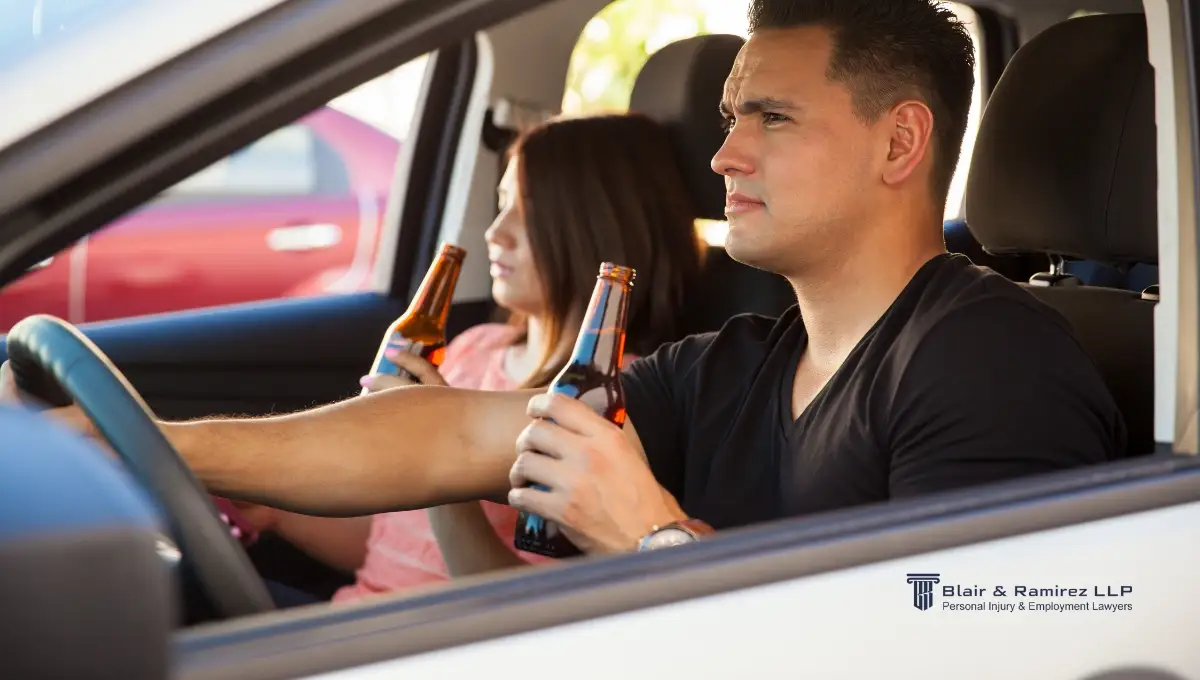
Speeding and Aggressive Driving: Reckless Behavior That Increases Liability
Excessive speed, tailgating, unsafe lane changes, and red-light violations are forms of aggressive driving that significantly elevate both the likelihood and severity of motor vehicle collisions. These reckless behaviors commonly lead to rear-end impacts, rollovers, and multi-vehicle freeway pileups. Speed reduces reaction time, increases stopping distance, and amplifies the force of impact, often resulting in serious or life-threatening injuries. In personal injury claims, at-fault drivers may deny liability, and insurance companies frequently attempt to minimize payouts. Skilled legal representation is essential to gather evidence, challenge disputed narratives, and pursue the full compensation victims are legally entitled to under California law.
What Driving Mistakes Lead to Car Accident?
1. Tailgating in Heavy Traffic
Following another vehicle too closely significantly reduces reaction time and braking distance, especially in congested traffic conditions. This aggressive driving behavior is a primary cause of rear-end accidents. Under California law, the rear driver is typically presumed negligent unless clear evidence proves otherwise. Maintaining a safe following distance is not just prudent, it’s a legal duty that, when breached, can lead to liability for resulting injuries and damages.
2. Misjudging Left-Turn Gaps: A Risk Factor for Severe Intersection Collisions
Failing to yield before making a left turn at an intersection is a common cause of side-impact (T-bone) collisions. These crashes often occur when a driver misjudges the speed or distance of oncoming traffic and proceeds without a safe gap. Under California Vehicle Code § 21801, left-turning drivers must yield the right-of-way until it is safe to complete the turn. Determining fault in these cases can be complex and may involve shared liability, especially if other drivers were speeding or failed to obey traffic signals. Thorough investigation and legal advocacy are essential to protect your rights and recover full compensation.
3. Overcorrecting After Lane Drift: A Dangerous Reaction That Escalates Risk
Overcorrecting after unintentionally drifting out of a lane, particularly at high speeds, can lead to loss of vehicle control, rollovers, or unintended collisions with adjacent traffic. This abrupt maneuver often results from driver distraction, drowsiness, or inattention and may escalate a minor error into a serious accident. California law requires drivers to maintain control of their vehicles at all times. When overcorrection causes a crash, liability may rest with the driver unless external factors, such as roadway hazards or mechanical failure, can be proven.
4. Failing to Check Blind Spots Before Merging: A Common Cause of Sideswipe Collisions
Neglecting to check blind spots before merging or changing lanes is a frequent contributor to sideswipe accidents. These collisions typically occur when a driver fails to perform proper mirror checks or shoulder glances, encroaching into an occupied lane. Drivers must ensure it is reasonably safe before initiating any lane change or merge. Liability in these cases often hinges on which driver had the legal right of way, and fault is typically assigned to the merging driver who failed to exercise due care. Clear evidence; such as dashcam footage or eyewitness accounts is critical in proving negligence and securing rightful compensation.
5. Running Red Lights or Stop Signs: A Leading Cause of High-Impact Crashes
Disregarding traffic signals or stop signs is a serious traffic violation that often results in high-speed T-bone or head-on collisions; some of the most dangerous types of crashes. These violations typically occur due to impatience, distraction, or impaired judgment. Under California Vehicle Code §§ 21453 and 22450, drivers are legally required to stop at red lights and stop signs. Failure to comply almost always results in full liability for any resulting collision. Clear evidence such as traffic camera footage, police reports, and eyewitness testimony is vital in proving fault and pursuing maximum compensation in these cases.
Injuries and Damages Common Across Car Accident Types
Car accidents often lead to three kinds of harm: physical injuries, financial losses, and emotional distress. California law considers all types of damage when calculating compensation. The crash type can influence injury severity and the value of your car accident claim.
Common Physical Injuries After Impact
Car accidents frequently result in physical injuries that range from mild to life-altering. The most common include:
- Whiplash: Caused by sudden neck movement, especially in rear-end collisions.
- Broken Bones and Fractures: Occur in T-bone or rollover crashes where force is unevenly distributed.
- Head Injuries or Concussions: Common in head-on collisions or when airbags deploy.
Prompt medical care is essential. Records, X-rays, and MRIs often serve as key evidence in both car accident claims and personal injury cases.
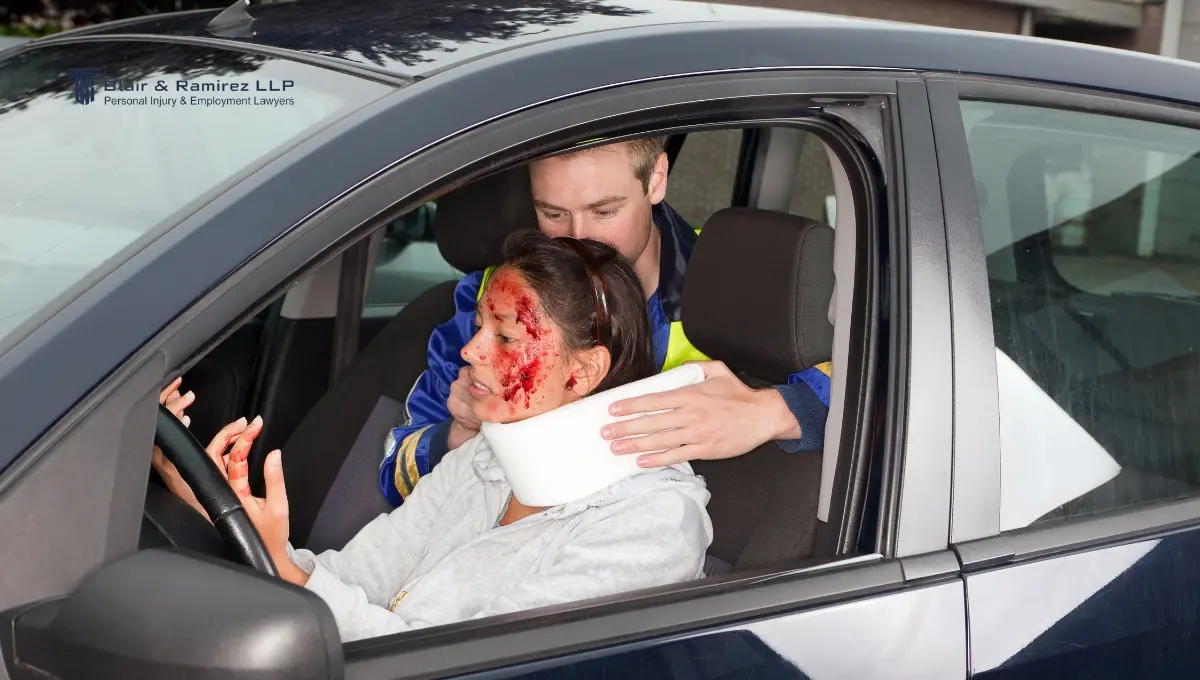
Property Damage Severity by Accident Type
Different types of car accidents result in varying levels of vehicle damage. Some crashes result in cosmetic issues, while others lead to total loss.
- T-bone and Head-on Collisions: Often cause structural damage to the vehicle frame, which insurers may declare a total loss.
- Sideswipe Accidents: Typically result in cosmetic damage, such as scrapes, dents, or broken mirrors, which is less severe but still costly to fix.
- Rear-end Impacts: Can damage bumpers, trunks, or exhaust systems, especially at high speeds.
Insurance adjusters consider the location of the damage and the repair cost when deciding payouts. Photos, repair bills, and mechanic reports help support your property damage claim.
Emotional and Financial Consequences of Serious Accidents
Severe car accidents cause more than physical injuries. Victims often experience long-term emotional and financial harm, including:
- PTSD and anxiety, especially after high-impact or hit-and-run crashes.
- Lost income due to missed work, surgery, or long-term recovery.
- Ongoing medical costs, including rehab, therapy, or specialist care.
California law classifies these as non-economic and future damages. Pain and suffering compensation often increases in proportion to the severity and duration of the recovery.
How Is Liability Determined for Each Car Accident Type in California?
California follows the Pure Comparative Negligence Rule to determine liability in car accidents. The court assigns each party a percentage of fault, and it reduces your compensation by the portion of responsibility you bear. For example, if the court finds you 20% at fault, you can still recover 80% of your total damages.
Establishing liability requires compelling evidence, including:
- Dashcam or surveillance footage
- Eyewitness testimony
- Official police reports
- Forensic vehicle damage analysis
In more complex cases, such as multi-vehicle collisions, sideswipes, or intersection crashes, fault is often disputed, with insurers working to minimize their financial exposure. An experienced California car accident lawyer can protect your rights, gather the necessary evidence, and ensure liability is determined based on the facts and applicable law, not speculation or insurer bias.
If you need legal help regarding car accidents near Los Angeles, Blair and Ramirez Law's expert Los Angeles car accident attorneys will help you.
Legal Steps to Take After Any Type of Car Accident in California
The aftermath of a car accident can be chaotic, but taking the right legal steps immediately can make all the difference in protecting your health, preserving your rights, and maximizing your financial recovery. Whether you're involved in a minor collision or a multi-vehicle freeway crash, a clear legal strategy from the start is essential.
Take these 6 critical legal steps after a crash:
- Step 1: Call 911 and Request Medical Assistance: Prompt medical care protects your health and ensures an official police report is filed, both are key components in any injury claim.
- Step 2: Move to Safety and Document the Scene: If it’s safe to do so, take detailed photos of vehicle damage, visible injuries, road conditions, license plates, and the surrounding intersection or traffic control devices.
- Step 3: Exchange Insurance and Contact Information: Gather the other driver’s name, phone number, driver’s license number, vehicle registration, and insurance policy details.
- Step 4: Notify Your Insurance Company: Report the accident promptly, sticking to the facts. Avoid speculating about fault or providing recorded statements without legal counsel.
- Step 5: Seek a Comprehensive Medical Evaluation: Many serious injuries, such as concussions, internal bleeding, or soft-tissue damage, may not show symptoms right away. A full evaluation documents your condition and links it to the crash.
- Step 6: Consult a California Car Accident Attorney: Before speaking to adjusters or signing anything, speak with an experienced lawyer. Legal counsel can help you avoid costly mistakes, protect your claim, and pursue the full compensation you deserve.
How a California Car Accident Lawyer Can Help After a Crash
Following a car accident, legal support is critical, not just for filing paperwork, but for protecting your rights, building a strong injury claim, and ensuring you don’t settle for less than you deserve. A skilled California car accident attorney levels the playing field against insurance companies and positions you for full and fair compensation.
Here are 5 key ways a qualified lawyer can help you after a crash:
- Handle Insurance Negotiations: Insurance adjusters are trained to delay, deny, or minimize payouts. Your attorney pushes back and fights for what your claim is truly worth.
- Bring in Expert Witnesses: From accident reconstruction specialists to medical experts, a lawyer can bring in the right professionals to establish fault and support the extent of your injuries.
- Manage All Communication: Your lawyer handles all interactions with insurers and opposing parties, preventing you from making statements that could be used against you.
- Pursue Maximum Compensation: Whether it's ongoing medical treatment, lost income, or pain and suffering, your attorney calculates the full value of your claim and pursues it aggressively.
- Represent You in Court if Necessary: If negotiations fail, your lawyer will litigate on your behalf to secure the justice and compensation you deserve.
From day one, legal representation ensures you’re protected, especially in complex or serious injury cases where the stakes are high.
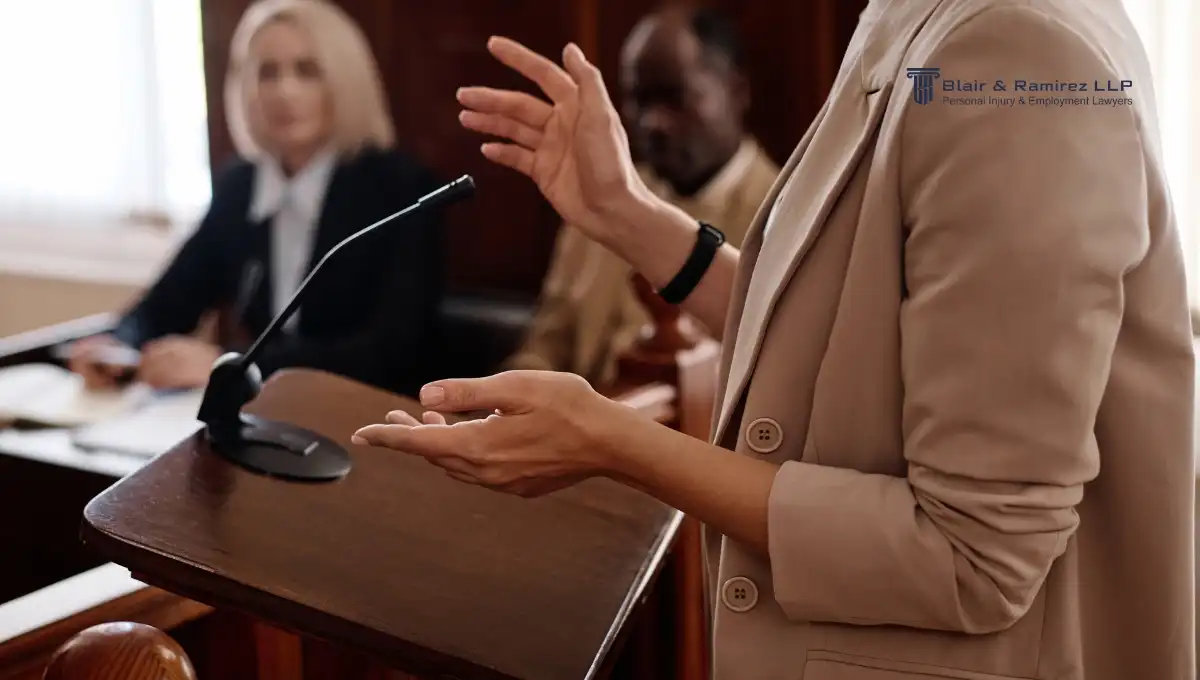
Why Choose Blair & Ramirez LLP for Your California Car Accident Case
After a car accident, you deserve more than just legal help, you deserve a team that genuinely cares about your recovery, your future, and your peace of mind. At Blair & Ramirez LLP, we understand how overwhelming this time can be, and we’re here to stand by your side every step of the way. Our experienced attorneys don’t just handle cases, we fight for people, families, and lives that have been turned upside down by someone else’s negligence.
Here’s Why Injury Victims Choose Blair & Ramirez LLP:
| What Sets Us Apart | Why It Matters |
|---|---|
| Award-Winning Attorneys | Our firm is honored to be recognized across California for our dedication to injury victims and our success in and out of court. |
| In-Depth Knowledge of California Car Accident Law | We’ve helped hundreds of clients handle some of the most challenging accident cases, ranging from simple fender benders to life-altering collisions. |
| Client-Focused Legal Care | You won’t be passed off to an assistant. An experienced attorney personally handles your case, listens to your concerns, and puts your needs first. |
| No Upfront Costs–Ever | We don’t want legal fees to be a burden. You pay nothing unless we win your case. That’s our promise, so you can focus on healing, not finances. |
Speak With an Experienced Car Accident Lawyer in California
If you’re feeling uncertain about your legal rights after a crash, you don’t have to navigate the process alone. At Blair & Ramirez LLP, we provide trusted legal guidance and aggressive advocacy for accident victims across California. Time is critical, delays can jeopardize your claim, weaken available evidence, and reduce your chances of securing full compensation
Whether you're dealing with medical bills, lost income, or insurance pressure, we’re here to protect your rights and fight for the justice you deserve.
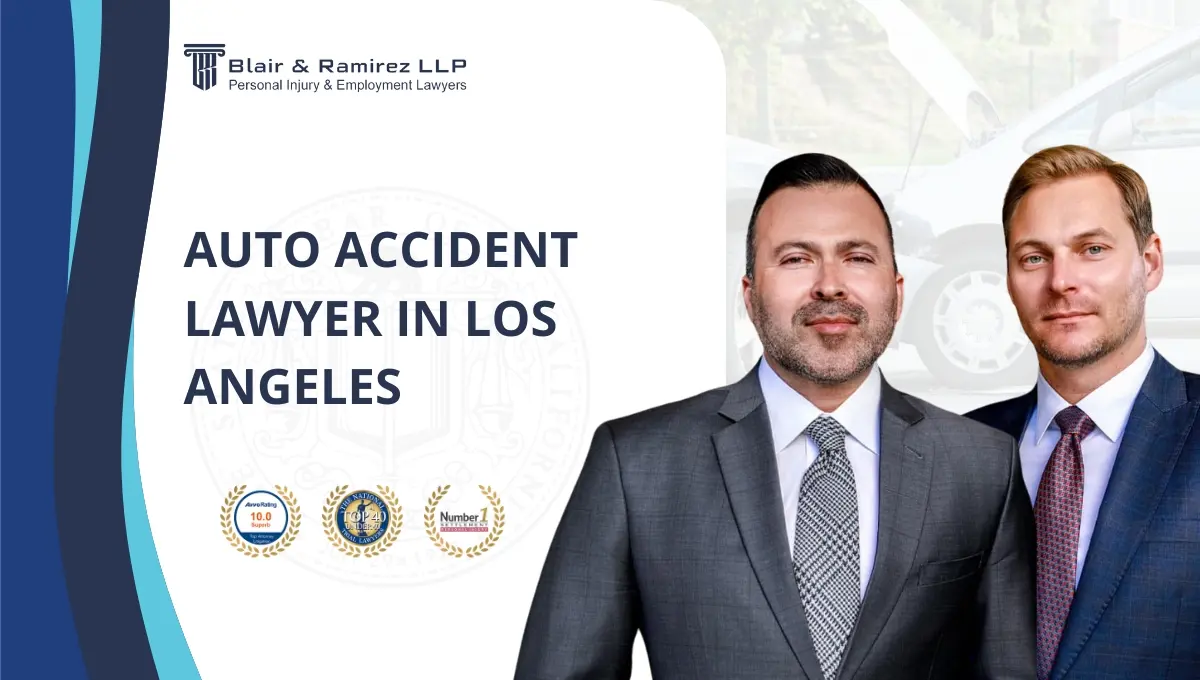
Tell Us What Happened - We’re Ready to Help


